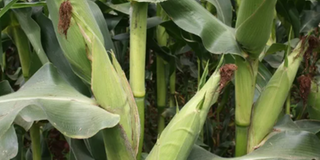The first farmers of Nakuru County

Wheat was one of the first crops planted in Nakuru during the colonial times.
Nakuru has undoubtedly rose the ranks to become an agricultural giant and a major player in production of food for the country.
But this did not happen overnight.
Nakuru lies in what was famously known as the white highlands by the white settlers.

The Late Lord Delamere owns large tracts of land in Nakuru County.
The fertile soils, favourable temperatures and regular distribution of rain throughout the year enabled regular farming patterns to take shape.
With all these reasons the then Nakuru District was a magnet that attracted white settlers who saw great potential within Nakuru.
Also Read: How Nakuru was Born
Lord Delamare described it as "A friendly and temperate patch of Africa where a white man could feel alive and invigorated and could keep healthy.”
John Githanga, a native Nakuru resident remembers the earlier days when the white settlers including Lord Delamere and Lord Egerton settled in Naivasha and Njoro respectively.

John Githanga, a resident of Nakuru.
Githanga adds that the surrounding areas of Molo and Kuresoi were all regarded as land belonging to white settlers.
“Post-independence, Jomo Kenyatta came to Old Town Hall and held a meeting with white settlers to re-assure them that no retaliation will be forthcoming. Afterwards, Africans also took up and continued with farming,” he says.
During that period farmers were mostly divided into two and that is large scale farmers and small scale farmers.
He continues, “The areas of Manyani, 58, Milimani and South Cemetery were large parcels of land where people used to plant maize and beans. These areas constituted small- scale farming. The areas of Rongai, Molo and Gilgil was where large scale farming took place as most of the people in those areas planted wheat in large tracts of land.”
Surprisingly, when large scale farming was first rolled out in the district, Lord Delamare and his fellow settlers were employing a trial and error tactic until they finally succeeded in controlling the diseases and pests that were attacking the crops.

Nakuru is known for planting large amounts of maize.
By 1920, Nakuru district had 14,086 acres under maize and 13,142 acres under wheat.
Having the A104 road linking Nakuru to Nairobi and Kampala as well as the railway line greatly helped in the transport of food to other parts of the country.
Fast forward to 2023 and the status quo has been maintained with seventy percent of the county still highly effective in food production with a large chunk of it being exported worldwide.
